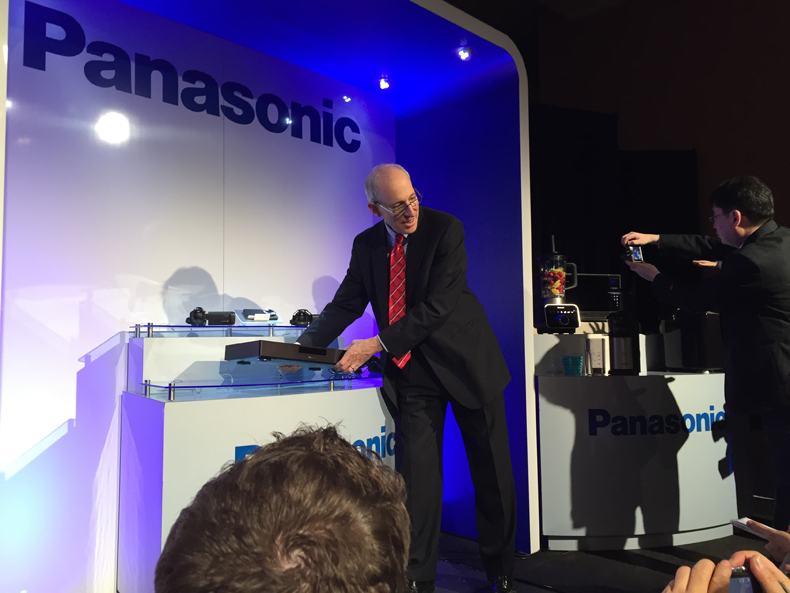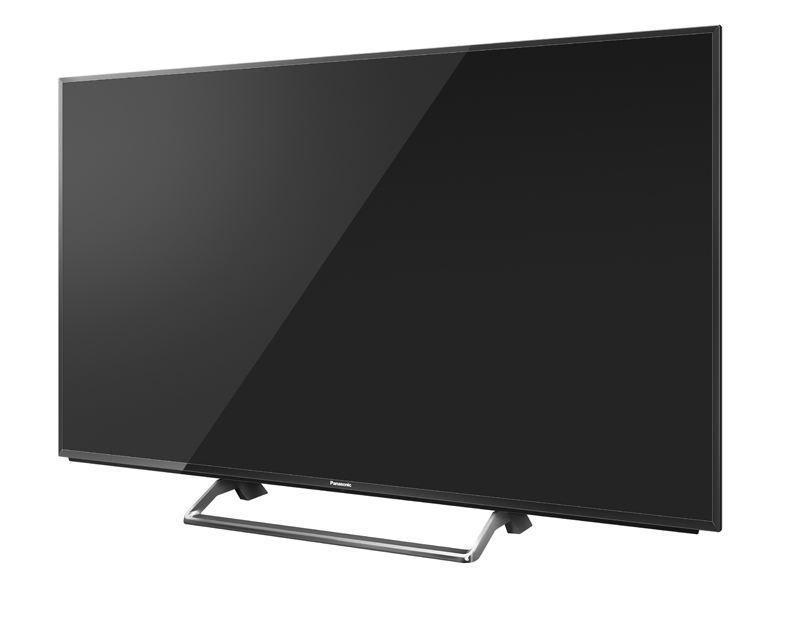CES: Panasonic unveils prototype 4K Blu-ray player, 2015 4K TVs
Panasonic's CES 2015 press conference proved to be a low-key affair, but the main highlights did include a range of new 4K TVs and a prototype 4K Blu-ray player.

There were few major surprises from Panasonic at CES 2015, although there was a debut for a prototype 4K Blu-ray player (shown above), which it promises will arrive this year. The manufacturer also launched the new range of Technics hi-fi components in the US, but we've already seen those in the UK.
4K Ultra HD is clearly at the heart of the company's TV/video strategy, with a four-strong range of new 4K LED screens (nine models in total) - including the TC-50CX600U, which won a CES 2015 Innovation Award.
The full TV line-up comprises the flagship CX850 series, then the CX800, followed by the mid-range CX650 and CX600 ranges. All of these will feature Panasonic's Life+Screen smart TV functionality, which is powered by the Firefox OS, and Panasonic tells us its range will also include a number of curved screens, though there were none on show at CES 2015.
Updated: Panasonic unveils 2015 TV range with curved TVs and Firefox smart platform

The CX models use a new Wide Colour Phosphor technology that Panasonic says delivers high energy efficiency and improved brightness. By developing a new phosphor with RGB spectral characteristics, the company says it has developed "dramatic energy savings of more than 40 per cent" over its 2014 UHD TVs.
Newly developed panels also offer a wider colour gamut with "richer, more vivid images", says Panasonic. Local dimming technology is said to deliver "deeper blacks and smooth, detailed gradation".
We're hoping find out more about Panasonic's 2015 TV range at its European Convention in Frankfurt next month.
Get the What Hi-Fi? Newsletter
The latest hi-fi, home cinema and tech news, reviews, buying advice and deals, direct to your inbox.

Details of the 4K Blu-ray player remain sketchy, but it will be HDR (High Dynamic Range)-compatible and will sit above two other new Blu-ray models - the Panasonic DMP-BDT270 with 4K upscaling/DLNA/web browser and the DMP-BD93.
Both models support Miracast for mirroring the content of a smartphone or tablet directly on to a large TV screen.
Pricing and availability of all three Blu-ray players has yet to be confirmed.
Panasonic has also confirmed that it has joined the newly-formed UHD Alliance to try and set industry-wide standards for Ultra High Definition.
Andy is Global Brand Director of What Hi-Fi? and has been a technology journalist for 30 years. During that time he has covered everything from VHS and Betamax, MiniDisc and DCC to CDi, Laserdisc and 3D TV, and any number of other formats that have come and gone. He loves nothing better than a good old format war. Andy edited several hi-fi and home cinema magazines before relaunching whathifi.com in 2008 and helping turn it into the global success it is today. When not listening to music or watching TV, he spends far too much of his time reading about cars he can't afford to buy.

